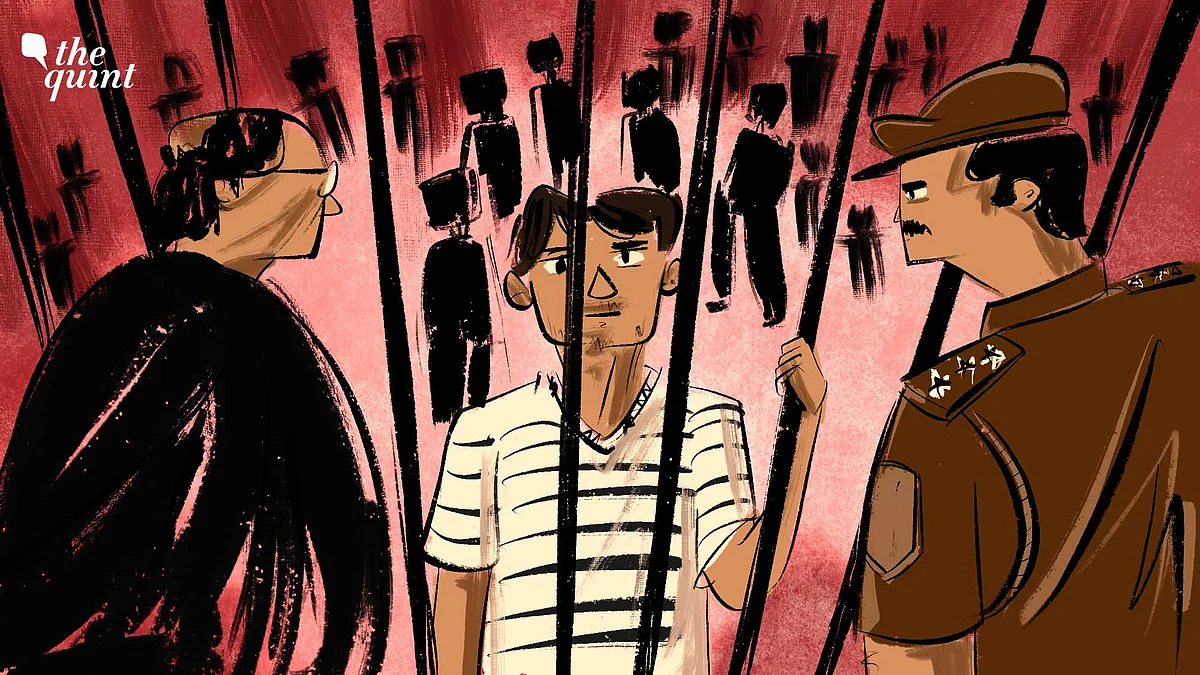
Teen Convicted as Adult: 26 Years of Injustice in Indian Legal System
At no point was the evidence of his juvenility taken into account until the SC did so in 2025, writes Alok Prasanna.

advertisement
From all the evidence available, Om Prakash alias Raju alias Israel alias Raju Das killed three people and gravely injured one – all from the same household where he worked as a gardener. From all the evidence available, Om Prakash was 14 years old when the crime was committed and could not have been tried as an adult or given the death penalty.
Yet, Om Prakash was tried as an adult, sentenced to death, and spent the next 20 years of his life trying to prove that he was a juvenile when the crime was committed.
And thereby hangs a tale about the Indian criminal justice system.
The Crime
Om Prakash (then known as Raja), hired as a gardener to work in the house of retired army man, Brigadier Shyam Lal Khanna, went on a rampage one morning in 1994. Using a sword, he killed Brigadier Khanna’s son Sarit and sister-in-law Bishan before killing Brigadier Khanna himself. The sole survivor and eyewitness to the killings, Brigadier Khanna’s wife Rama, managed to lock herself up in the bathroom and avoid becoming Om Prakash’s victim despite sustaining serious injuries.
Interestingly though, the prosecution was never able to establish a firm motive for Om Prakash going on a rampage against his employers. Even in subsequent judgments, the courts keep talking about two possible theories – that he was either disgruntled over their plan to remove him over an alleged theft or that he had an illicit relationship with a fellow employee’s sister and was going to be punished for that.
However, motive is quite important when it comes to the question of punishment – and this is where we see in the next section that completely different circumstances played a role in the punishment Om Prakash was given by the courts.
The Punishment
From the first to the last, Om Prakash insisted that he was a juvenile as on date of committing the offence.
As a juvenile offender, as per the Juvenile Justice Act, 1986 then in force, he could not have been tried in a regular court of law and could have only been tried before a juvenile court. He could have also not been sentenced to death or imprisonment.
Even as Om Prakash insisted before the trial court that he was 14 at the time of the incident, his statement was rejected for a fairly bizarre reason – that he had a bank account and a cheque book in his name. This, the court reasoned, was enough to show that he was not a minor since it was apparently impossible for minors to open a bank account.
Not only the trial court, but the High Court and the Supreme Court also simply accepted the existence of a bank account as “proof” of his majority. Nowhere did the courts point to any law which said that minors could not have bank accounts.
The bizarreness doesn’t end here.
The State of Uttarakhand had produced a school certificate from Om Prakash’s school in Jalpaiguri to show that he was actually a minor as on date of the occurrence of the offence. Yet, the curative petition was also dismissed without giving Om Prakash a hearing.
While his death penalty was eventually commuted to life in prison (up to the age of 60) by President Pratiba Patil, at no point was the evidence of his juvenility taken into account by any authority until the Supreme Court did so in 2025.
But why? Why did successive courts and authorities simply refuse to look into Om Prakash’s claims of juvenility?
Read without context, Om Prakash is being punished for a triple murder. Read with context, Om Prakash is being punished for killing his "master". I have put the word in scare quotes but the Supreme Court judgment of 2002 unironically uses the word three times to describe Om Prakash’s employer. The court does not really go into the motive or what might have prompted Om Prakash to take the drastic step.
In fact, it is utterly uninterested in doing so even though the law requires the court to weigh the motives of the convict while handing down the death sentence. The Supreme Court, like the rest of the judicial machinery, is not interested in justice according to the law but vengeance using the processes of law.
It was only in 2025 that the Supreme Court finally recognised that a grave injustice had been perpetrated by the judicial system in this case.
Even as it directs Om Prakash’s release, the court grants him no compensation for the time spent illegally in prison or honestly examines why the entire judicial machinery conspired to keep him there.
(Alok Prasanna Kumar is a Senior Resident Fellow at the Vidhi Centre for Legal Policy in Bengaluru. He is also a member of the Executive Committee of the Campaign for Judicial Accountability and Reforms. This is an opinion piece, and the views expressed are the author’s own. The Quint neither endorses nor is responsible for them.)
- Access to all paywalled content on site
- Ad-free experience across The Quint
- Early previews of our Special Projects
Published: undefined